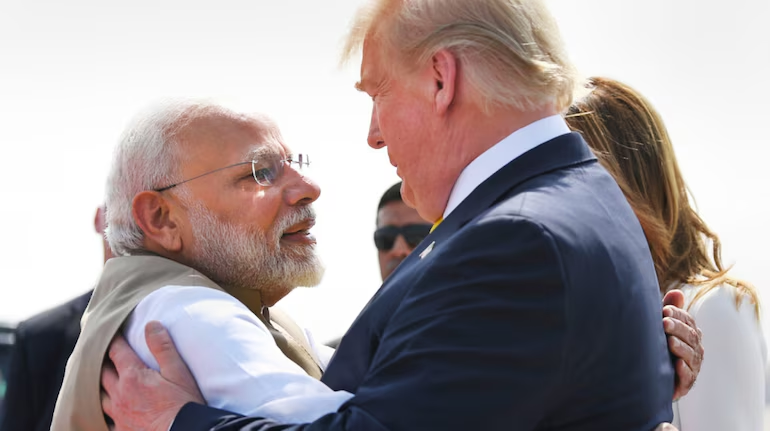New Delhi/Washington, April 2025 – India and the United States have finalised the framework for an ambitious bilateral trade agreement, marking a strategic step toward stronger economic and diplomatic ties. The deal, comprising 19 comprehensive chapters, is set to cover critical aspects of international trade, including goods, services, investments, and customs procedures.
This development paves the way for high-level negotiations in Washington beginning April 23, where senior officials from both nations will delve deeper into the agreement’s technical and legal structure. The India-US trade deal has been years in the making and could be a pivotal moment in shaping 21st-century trade policies.

A Major Leap in Bilateral Trade
The agreement’s structure reflects a mature economic partnership between the world’s largest and most dynamic democracies. Both India and the US have long shared mutual interests in free trade, innovation, and investment security.
According to a PTI report, the finalised framework demonstrates progress in discussions that had previously stalled over tariffs, market access, and labor concerns. With this milestone, the stage is now set for formal dialogues to materialize into a binding pact in the coming months.
What’s Inside the 19-Chapter Pact?
While the full text of the agreement has not yet been disclosed, sources suggest that the 19 chapters will cover a range of essential economic sectors and practices. Expected focus areas include:
- Trade in Goods: Lowering tariffs, removing quotas, and facilitating the free movement of products.
- Trade in Services: Enhancing cooperation in IT, finance, education, and other professional services.
- Investment: Protecting investors’ rights and simplifying FDI regulations.
- Customs and Border Procedures: Streamlining customs clearances and ensuring transparent documentation.
- Digital Economy: Addressing cross-border data flows, cybersecurity, and e-commerce regulations.
- Labor and Environmental Standards: Ensuring fair labor practices and sustainable environmental policies.
- Dispute Resolution: Establishing mechanisms for settling trade disputes swiftly and fairly.
This structure ensures not only increased market access but also regulatory cooperation, which will benefit businesses, startups, and investors on both sides.
🇮🇳 India’s Delegation Heads to Washington
A high-level Indian delegation, led by Additional Secretary Rajesh Agrawal, will begin a three-day series of in-person talks with US counterparts in Washington, D.C. starting Wednesday, April 23. Notably, Agrawal has recently been named India’s next Commerce Secretary, and he will formally assume the position on October 1, 2025. 19
This move underlines India’s commitment to fast-tracking the deal and ensuring continuity in the leadership overseeing it.

Backed by Diplomatic Momentum
The current round of discussions builds on the March 2025 visit of Brendan Lynch, Assistant US Trade Representative for South and Central Asia. Lynch held extensive meetings in New Delhi with Indian trade and commerce officials from March 25 to 29, during which both sides expressed optimism over a breakthrough.
The finalized framework is a direct outcome of these diplomatic conversations, showcasing the growing trust and alignment between New Delhi and Washington on trade and economic matters.
Strategic Implications for Both Nations
This trade agreement has implications that stretch far beyond numbers and clauses. At its core, it strengthens a strategic partnership vital to the current geopolitical climate.
For India, this is an opportunity to expand its exports, attract higher levels of FDI, and bolster its “Make in India” initiative. With simplified trade procedures, Indian exporters—especially in sectors like textiles, pharmaceuticals, and electronics—could gain significant traction in the US market.
For the United States, a stronger trade relationship with India diversifies its economic dependencies and creates new avenues for American goods and services in a rapidly growing consumer market. 19
What Businesses and Investors Should Expect
The trade agreement is likely to: 19
- Open New Markets: Indian businesses may see expanded access to US consumers, especially in clean energy, pharmaceuticals, and IT services.
- Boost Investor Confidence: With clearer regulations and dispute resolution mechanisms, cross-border investors will have more confidence.
- Encourage Collaboration: Tech companies, universities, and startups on both sides will benefit from simplified service trade protocols.
- Strengthen SMEs: Small and medium-sized enterprises, often sidelined in large-scale global trade, could now find new channels and less red tape.
What’s Next?
The negotiations in Washington are a critical turning point. If talks proceed smoothly and mutual interests align, we could see the trade agreement signed before the end of FY2025.
However, both sides will still need to resolve outstanding issues, including: 19
- Agricultural subsidies
- Pharmaceutical patents
- Data localization requirements
- Digital service taxes
Despite these challenges, both countries are optimistic. The regular pace of diplomatic visits and technical exchanges signals a clear intent to close the deal.
Conclusion: A New Trade Era Begins
As India and the US begin this next chapter of economic collaboration, the finalized 19-chapter framework serves as a blueprint for mutual prosperity and shared growth. The upcoming negotiations could bring forth one of the most significant trade agreements between any two democracies in the world. 19
For Indian entrepreneurs, American investors, and global observers alike—this is a deal to watch.




